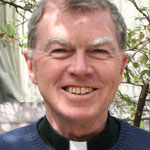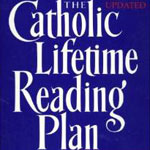News from Tasmania’s Mercury newspaper:
Dr Paul Hyland, who operates private clinics in Launceston and Hobart, said anti-abortion campaigners regularly targeted patients outside the Hobart practice and he supports abortion law reform that includes a ban on protests near clinics that perform the procedures.
Dr Hyland said protesters who targeted abortion clinic patients crossed the line between free speech and harassment.
“This is a minority in the community who want to force their views on others, it’s not freedom of expression,” he said.
Dr Hyland said it appeared pro-life campaigners, in a tactic he labelled “devious”, were booking false appointments at the clinic so they could plan protests for times when patients would be attending.
“They stand on the footpath opposite holding placards and pictures of fetuses and some patients are intimidated when they walk out or walk past. [The protesters] say prayers and offer forgiveness about guilt and shame,” he said.
The Reproductive Health Bill that passed Tasmania’s House of Assembly on Tuesday seeks to move abortion from criminal law into health law, and would prohibit protests near abortion clinics.
Despite Dr Hyland’s claims about abortion clinic protests, the Australian Medical Association’s Tasmanian branch maintains there is no such issue of concern in Tasmania.
The AMA is against the inclusion of the access zone restriction contained in the Bill.
“The AMA stands by our view, made in our submission, that we are not aware of (protests) being a problem,” said AMA Tasmania president John Davis.
Health Minister Michelle O’Byrne told State Parliament on Tuesday that the access zone restriction had been included in the Bill to protect women from being exposed to people who wished to shame or stigmatise them.
She said prohibited behaviour in the access zone around a clinic would include vocal protests and silent vigils.
For starters, I’m not sure it’s very accurate to call prayer vigils outside abortion clinics, ‘protests.’ Protests are loud and intended to change public opinion or government policy. Vigils aren’t.
Pro-choicers see abortion as a civil liberty — even if some pro-choicers are willing to restrict other civil liberties to protect this one.
Pro-lifers see abortion in life and death terms. It’s not just semantic to suggest that prayer vigils aren’t the same as protests. The ‘protesters’ outside clinics aren’t there to score a political point, much less to shame women. They’re there to save lives. Sometimes — rarely — they do save a life. Placard waving and shouting abuse doesn’t save lives. So I’m a bit dubious when I hear pro-life vigils described in those ways.
I went to one of these ‘protests’ once, while I was studying media and politics. The protesters had attracted the opprobrium of a local newspaper, as well as Melbourne University Student Union’s Farrago. I decided to see for myself, interview a few protesters and clinic staff, and parse the newspaper articles.
The protesters were silent. They made eye contact with passers by, and offered literature, but they never initiated conversation. They spoke only if they were spoken to. They told me they never numbered more than five, and there were always more women than men. One person was assigned to do nothing but pray (silently) for the duration of their vigil.
I think I received first class honours for my efforts. But more importantly, I learned how media reports sometimes don’t correlate with reality. Not even vaguely.





Thank you Fr John for your defence of those who pray outside abortion businesses. It seems when there are people who pray, it makes the abortion workers uncomfortable (I wonder why?). Very occasionally someone going in to have their child killed will change their mind and will usually continue on with the pregnancy, often with financial support from the prolifers.
There are tremendous lies told about prolife pray-ers outside the abortion mills. The truth is, they consider themselves placed at Calvary, where innocent human beings are being slaughtered. They are there to make reparation for the great evil of abortion, to pray for the conversion of all those within the abortion business and to give witness to the wrong of this holocaust.